Making a pergola rainproof is a nuanced endeavor that requires thoughtful consideration of materials, design, and implementation strategies. The choices range from installing durable polycarbonate roofing to leveraging sophisticated retractable canopies for versatility in weather protection.
Additionally, the importance of integrating an effective water drainage system cannot be overstated, as it ensures the longevity of the structure and prevents water accumulation. However, the decision-making process involves more than just selecting the right materials; it requires an understanding of the nuances of each option and their implications on the overall aesthetics and functionality of your outdoor space.
Discovering the optimal solution necessitates a closer examination of the factors at play.
Selecting Waterproof Materials
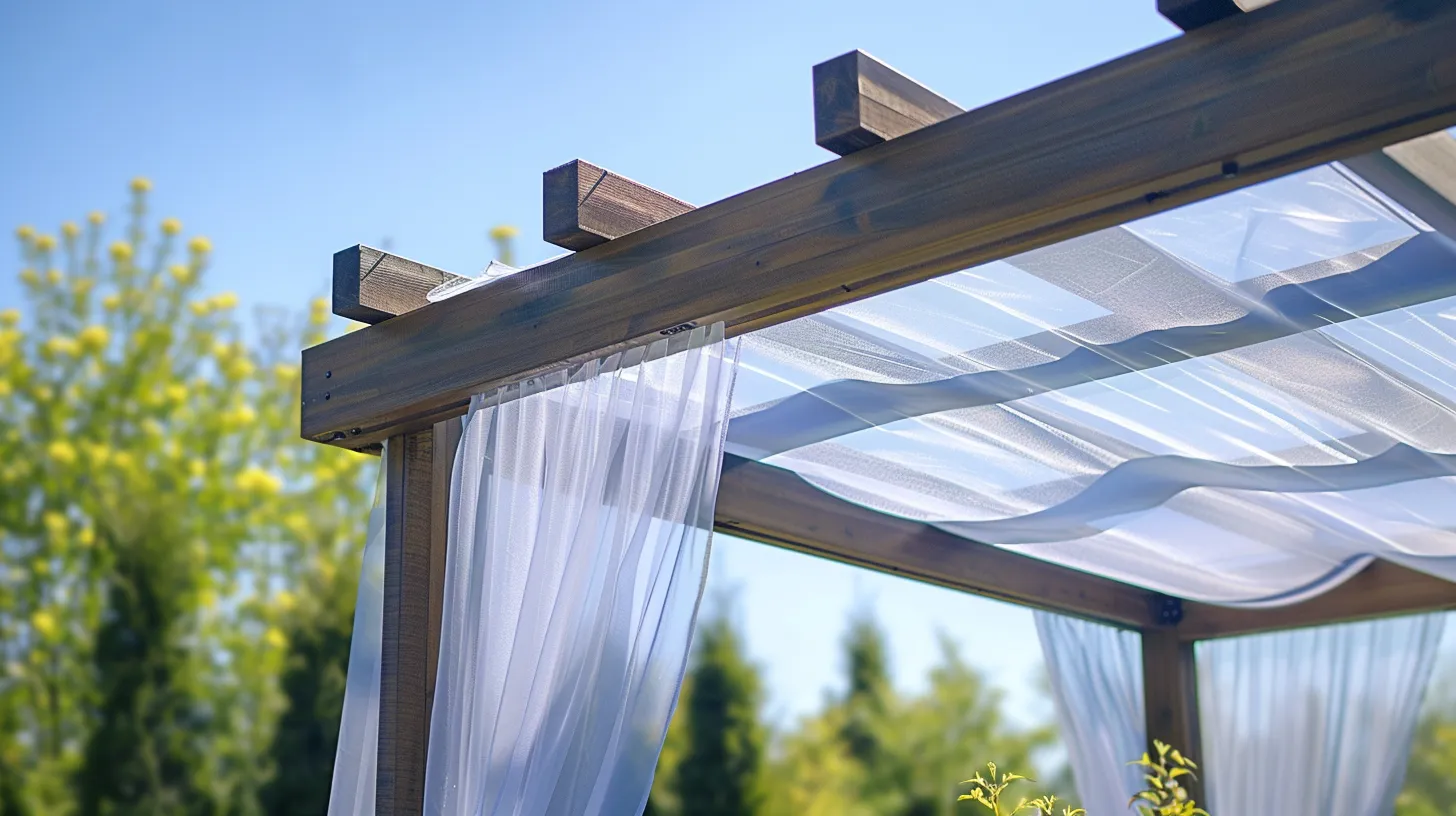
Choosing the right waterproof materials is crucial for constructing a pergola that remains resilient and functional in wet weather conditions. Materials such as aluminum and fiberglass stand out for their superior water resistance, making them ideal choices for pergola structures. Moreover, a louvered pergola roof design can be particularly effective, providing the flexibility to adjust coverage in response to changing weather conditions, thereby offering adjustable rain protection.
For additional waterproofing, incorporating waterproof canopies or covers made from durable materials like polyester, polyethylene, or vinyl can significantly enhance the pergola's resistance to moisture. These fabrics are designed to repel water, ensuring that the space beneath remains dry and comfortable, even during heavy rainfall.
Wooden pergolas, while aesthetically pleasing, require extra attention to ensure they are adequately protected from the elements. Sealing wood with water-resistant materials is essential to prevent water absorption, which can lead to warping and decay. Furthermore, implementing proper drainage systems, including gutters and downspouts, is vital. These systems help to efficiently channel water away from the pergola structure, minimizing the risk of water damage and prolonging the lifespan of the pergola.
Installing a Retractable Canopy
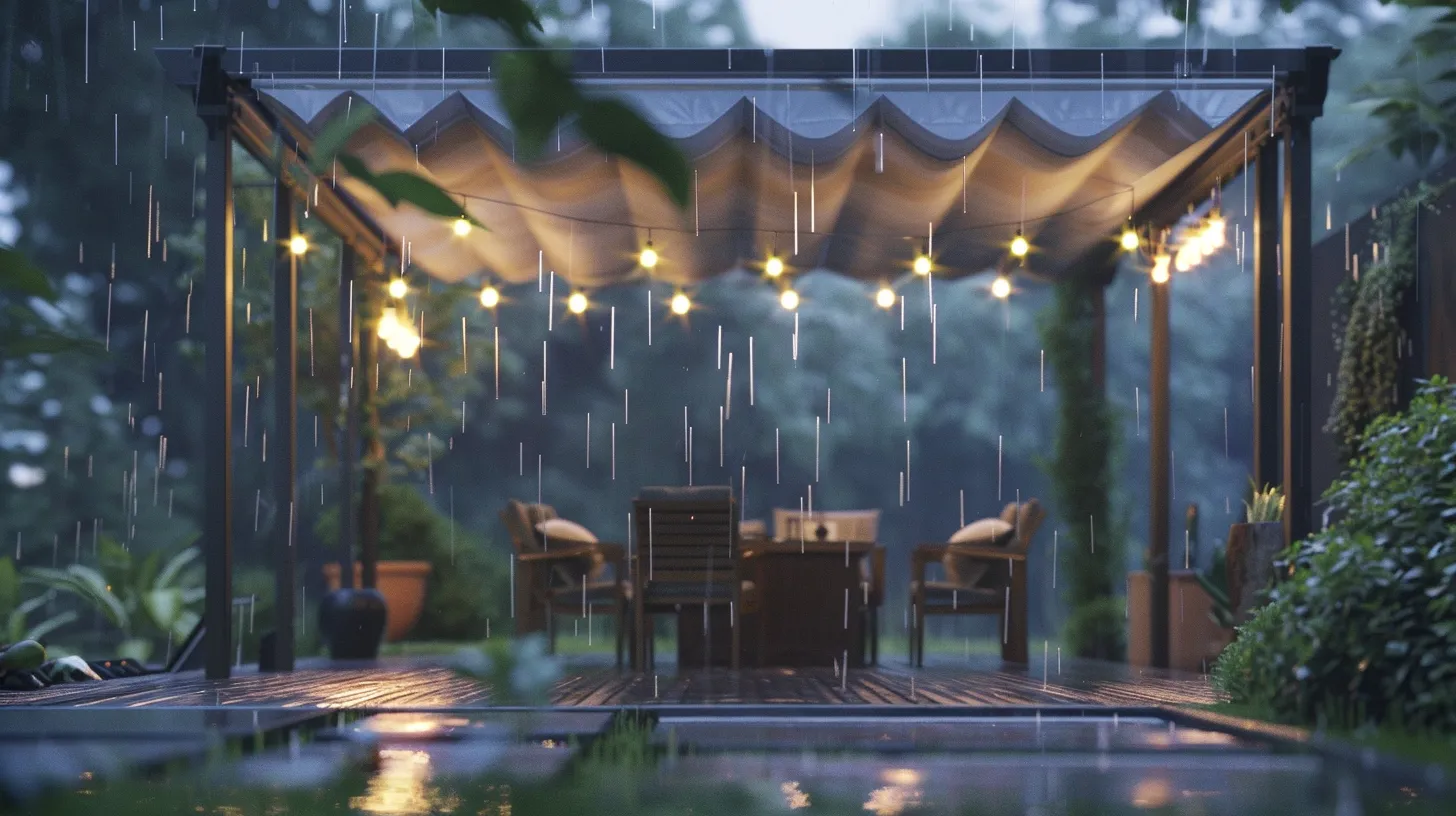
After exploring waterproof materials for pergolas, installing a retractable canopy emerges as a dynamic solution for adaptable weather protection. A retractable canopy offers the significant advantage of adjustable coverage, allowing homeowners to easily control the amount of sunlight filtering through and the level of rain protection desired. This flexibility is particularly useful in regions experiencing fluctuating weather conditions, ensuring that your outdoor space remains functional regardless of the forecast.
These canopies are constructed from durable, weather-resistant materials such as polyester or vinyl, which are designed to withstand the elements and provide long-term service. The installation process involves setting up anchoring hardware and tracks, which secure the canopy in place and ensure its stability and ease of operation. By choosing a retractable design, you gain the ability to open or close the canopy based on current weather conditions or personal preference, enhancing the usability of your pergola throughout the year.
To maintain the functionality and appearance of your retractable canopy, regular maintenance is essential. This includes cleaning the fabric to prevent mold and mildew buildup and lubricating moving parts to ensure smooth operation. Such maintenance practices contribute to the durability and reliability of your retractable canopy, making it a practical investment for rainproofing your pergola.
Adding Protective Roof Panels
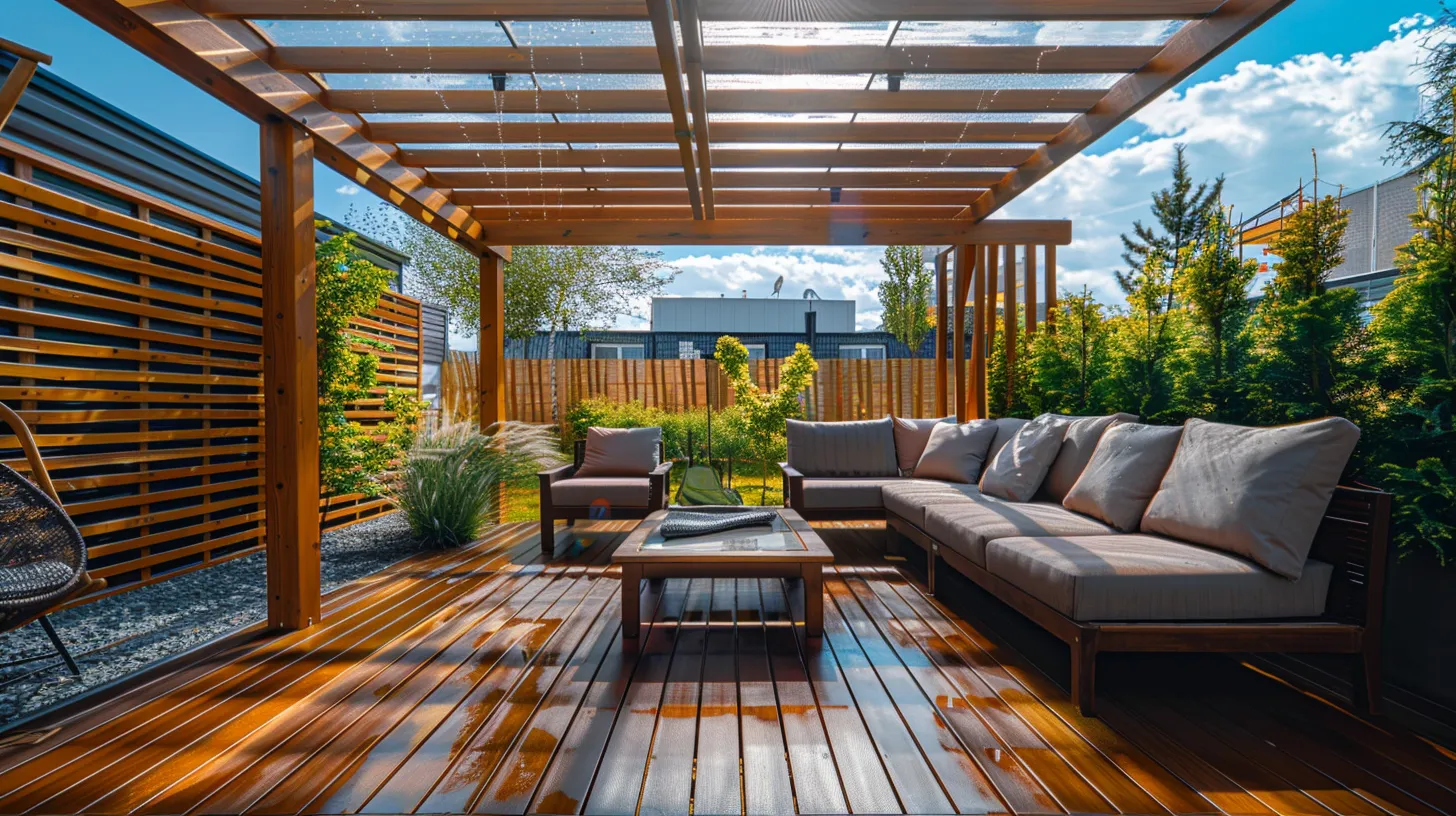
Incorporating protective roof panels is an effective strategy for enhancing the rainproof qualities of a pergola, offering a variety of materials that cater to different aesthetic preferences and functional requirements. Among the options, polycarbonate roof panels stand out for their lightweight, durable properties and their ability to offer excellent protection against rain. These panels are not only effective in keeping the pergola dry but also allow light to permeate, maintaining the brightness of the outdoor space.
For those seeking a cost-effective and weather-resistant solution, corrugated metal roofing panels present an ideal choice. These panels ensure a high level of waterproofing capability while contributing to the pergola's overall sturdiness. Similarly, clear PVC roof panels offer the dual benefits of rain protection and natural light filtration, making them a popular choice among homeowners who wish to enjoy their pergola regardless of the weather.
Aluminum pergola covers are favored for their sleek, modern appearance and reliable rain shielding properties. Alternatively, adding waterproof fabric covers or awnings can significantly enhance the pergola's resistance to wet conditions while also elevating its aesthetic appeal. These options provide flexibility in design and functional effectiveness, ensuring the pergola remains a comfortable and inviting outdoor retreat even during rainy seasons.
Sealing and Treating Wood
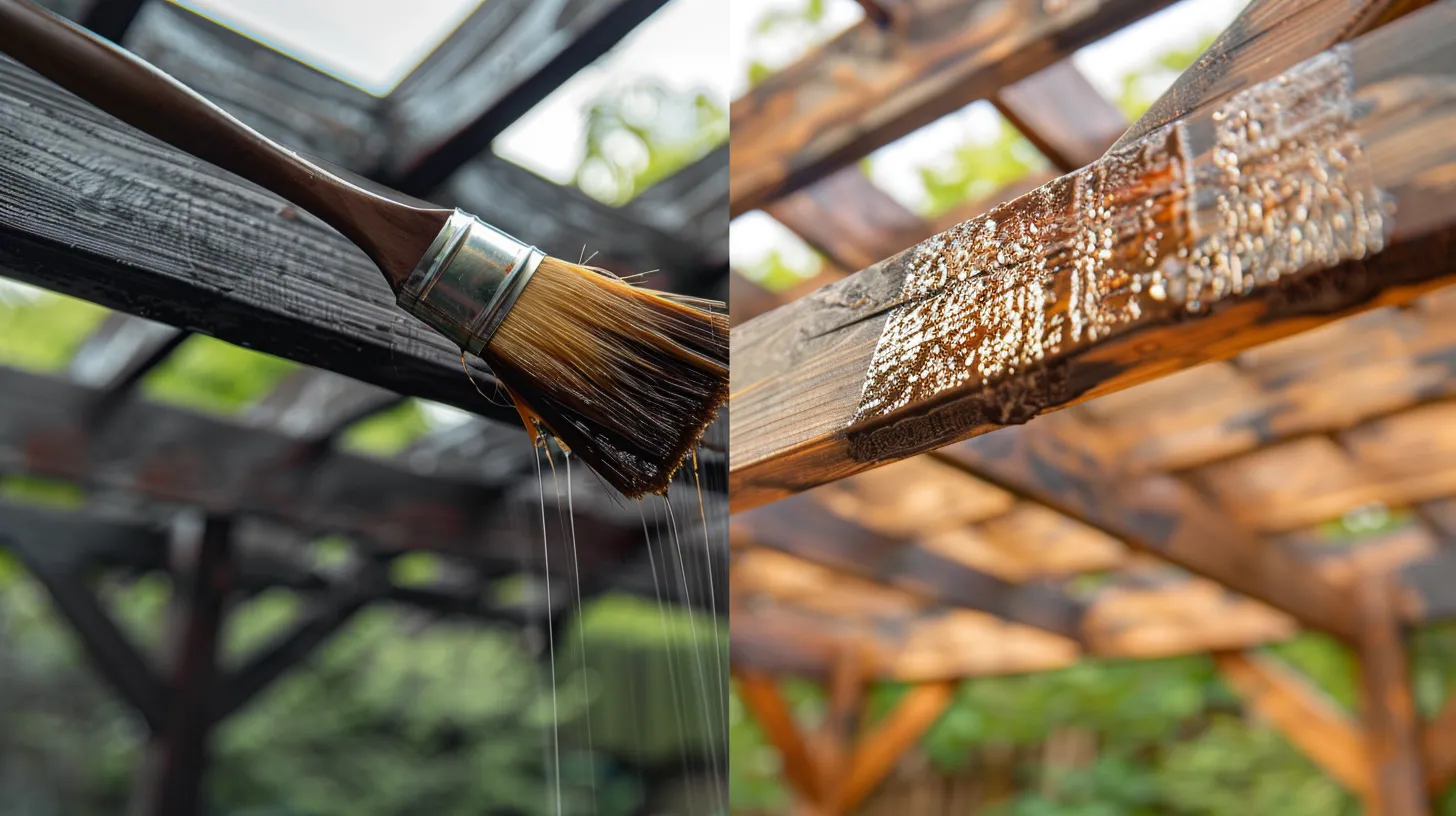
To effectively waterproof a pergola, applying a high-quality sealant such as polyurethane or varnish to the wood is essential. These waterproof sealants not only protect the wood from rain and moisture but also enhance its durability, ensuring your pergola remains a centerpiece of your outdoor space for years. The key to maximizing the efficacy of these treatments lies in their reapplication, typically every 1-3 years, depending on the environmental conditions and the wood's exposure to the elements.
Opting for pressure-treated wood or naturally rot-resistant species like cedar or redwood can further bolster the pergola's defense against rain. These materials, when combined with a water repellent stain, provide an additional layer of protection, safeguarding the wood from the detrimental effects of moisture while maintaining its aesthetic appeal.
Regular wood maintenance, including the inspection for and repair of any cracks, gaps, or signs of wear, is critical in preventing water from penetrating the pergola's structure. By sealing these vulnerabilities promptly, you ensure the longevity of the wood and maintain the waterproof integrity of the pergola, making it a durable and inviting outdoor retreat regardless of the weather.
Incorporating Water Drainage Systems
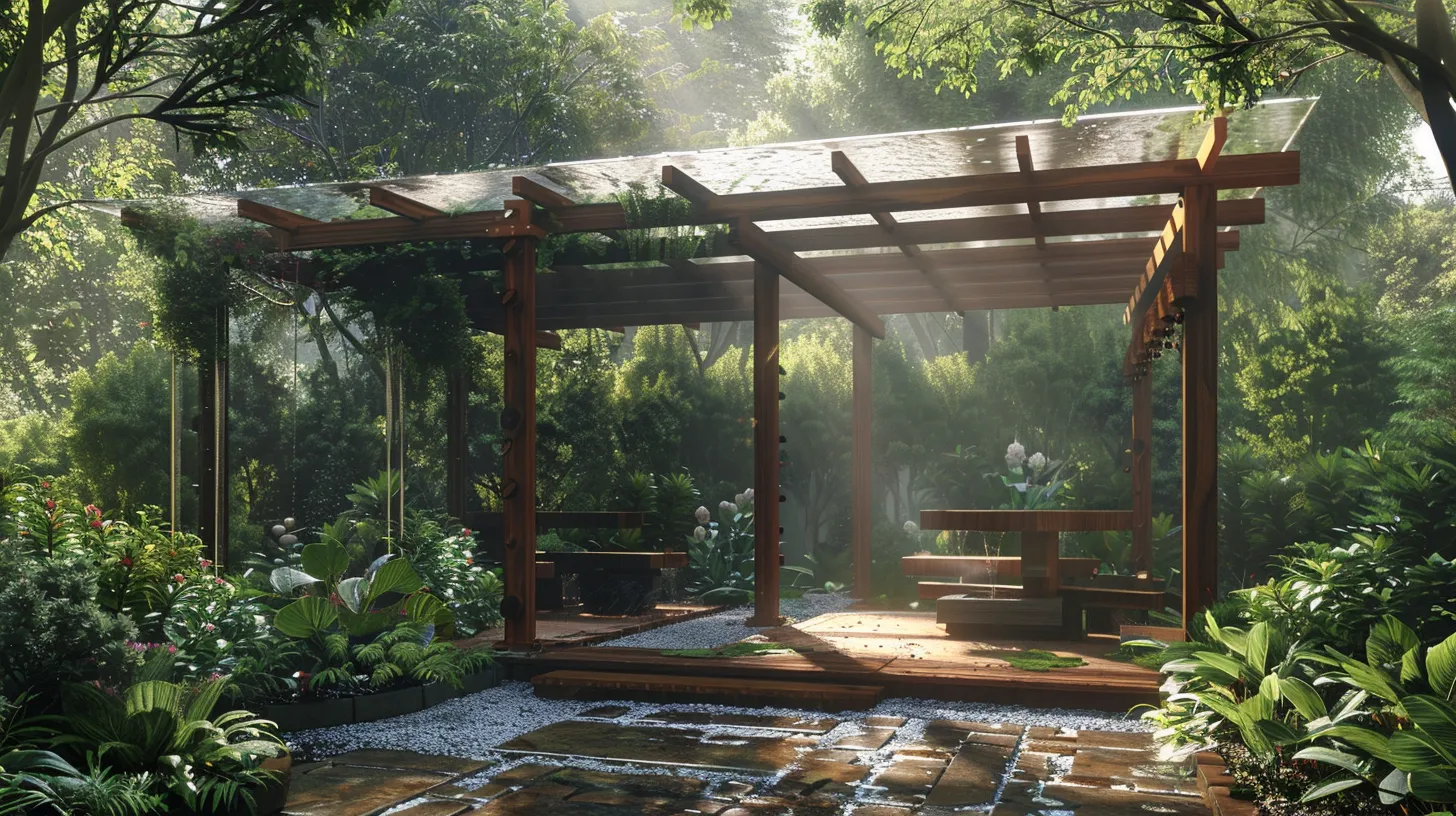
Beyond sealing and treating the wood, integrating effective water drainage systems plays a crucial role in ensuring your pergola remains rainproof. A reliable drainage system not only provides rain protection but also helps to maintain the structure's integrity by preventing water from pooling and causing damage.
To achieve a waterproof pergola, consider the following strategies:
-
Install Gutters and Downspouts: These are essential for directing rainwater away from the pergola. Gutters collect water that runs off the roof, while downspouts ensure it is channeled away from the structure, thereby preventing water damage.
-
Use Sloped Roofing Materials: Sloped roofing helps water drain away efficiently. Opt for materials that promote runoff and are compatible with the overall design of your pergola.
-
Apply Water-Resistant Sealants: Adding a rain diverter or using water-resistant sealants on the roof can significantly prevent water pooling, offering an extra layer of protection against moisture.
-
Incorporate a French Drain or Gravel Bed: A French drain system or a gravel bed around the pergola can absorb excess water, preventing it from accumulating around the base. Additionally, regular maintenance of your drainage system is crucial to avoid clogs and ensure long-term waterproofing effectiveness.










